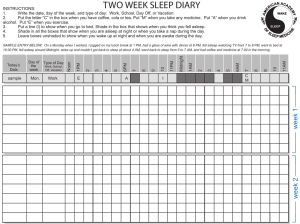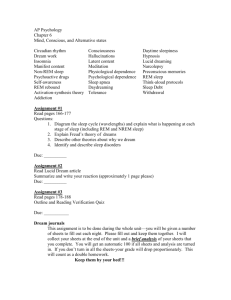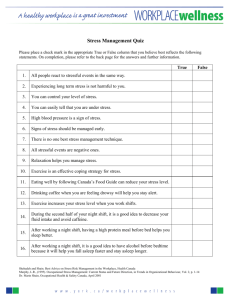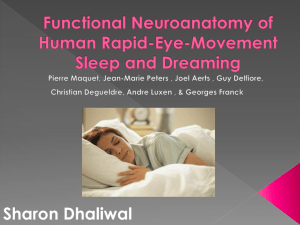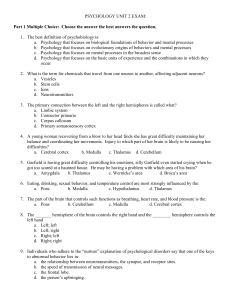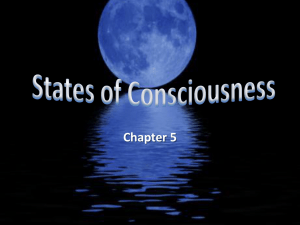Twilight Zone Deep Sleep
advertisement
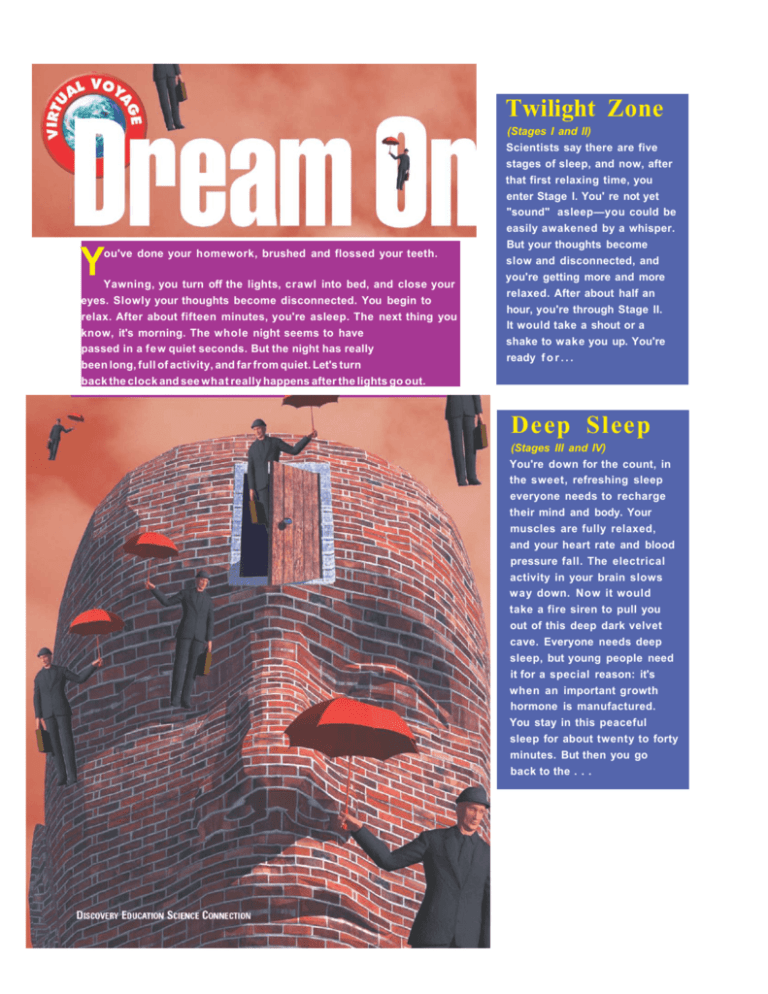
Twilight Zone Y ou've done your homework, brushed and flossed your teeth. Yawning, you turn off the lights, crawl into bed, and close your eyes. Slowly your thoughts become disconnected. You begin to relax. After about fifteen minutes, you're asleep. The next thing you know, it's morning. The whole night seems to have passed in a few quiet seconds. But the night has really been long, full of activity, and far from quiet. Let's turn back the clock and see what really happens after the lights go out. (Stages I and II) Scientists say there are five stages of sleep, and now, after that first relaxing time, you enter Stage I. You' re not yet "sound" asleep—you could be easily awakened by a whisper. But your thoughts become slow and disconnected, and you're getting more and more relaxed. After about half an hour, you're through Stage II. It would take a shout or a shake to wake you up. You're ready f o r . . . Deep Sleep (Stages III and IV) You're down for the count, in the sweet, refreshing sleep everyone needs to recharge their mind and body. Your muscles are fully relaxed, and your heart rate and blood pressure fall. The electrical activity in your brain slows way down. Now it would take a fire siren to pull you out of this deep dark velvet cave. Everyone needs deep sleep, but young people need it for a special reason: it's when an important growth hormone is manufactured. You stay in this peaceful sleep for about twenty to forty minutes. But then you go back to the . . . REM S l e e p (Stage V) Twilight Zone (Stages I and II) You may turn over, fuss with your covers, even open your eyes. Why do you go back to this "partial awakening?" Scientists think it may date back to a time in human evolution when we needed to keep checking for wild animals and other dangers in our surroundings, even while we were getting needed rest. We also need to keep moving so pressure sores don't form on sensitive skin, and blood doesn't pool in certain places. But it only takes a few minutes to get back down into . . . Deep Sleep (Stages III and IV) You stay sound asleep for another twenty or forty minutes. But now you're ready for some excitement. Lights! Camera! Action! Your eyes dart around wildly behind their closed lids, giving this stage its name: Rapid Eye Movement, or REM for short. Your eyes are following the "action" your brain is imagining the same way they would follow a movie— only you're the one on the big screen of your mind. Your brain is super-busy, generating almost the same amount of electricity as when you're awake. But the impulses it's making don't have anywhere to go. Most of your body is frozen, paralyzed. The impulses from your brain are blocked high in the spinal cord, above where the nerves to your large muscles connect. That's a good thing, because otherwise the brain could direct you to act out your dreams. Since the nerves to your eyes come from a higher place, your brain can successfully deliver its message to move. Your pulse keeps time with the action of your dream, now getting faster, now slowing down, and your breathing and blood pressure follow suit. During this stage, blood flow to your brain dramatically increases. A ll finished with REM, but the night is still young. You'll go through the entire sleep cycle three to five times this night and most others, with each cycle lasting 90 to 100 minutes. About half of that time will be spent in Stages I and II, with the other half split between deep sleep and REM sleep. REM will be the final stage before you w a k e up which is why some dreams are still vivid in the morning. O.K.—Now w a k e up! But soon it will be time for bed again—a special time when once again, your body proves that even when it's asleep, it's ALIVE. Activities B E S T R E S T Having just read "Dream On," you know there's a lot of activity going on inside your body when you're sleeping. Think about the various systems in your body and do some research to find out what your other systems are doing while you're asleep. To start you off, you'll find some clues on these two pages and in "Gray Matters" on pages 6-7. Make a list of your findings. DISCOVERY EDUCATION SCIENCE C O N N E C T I O N

